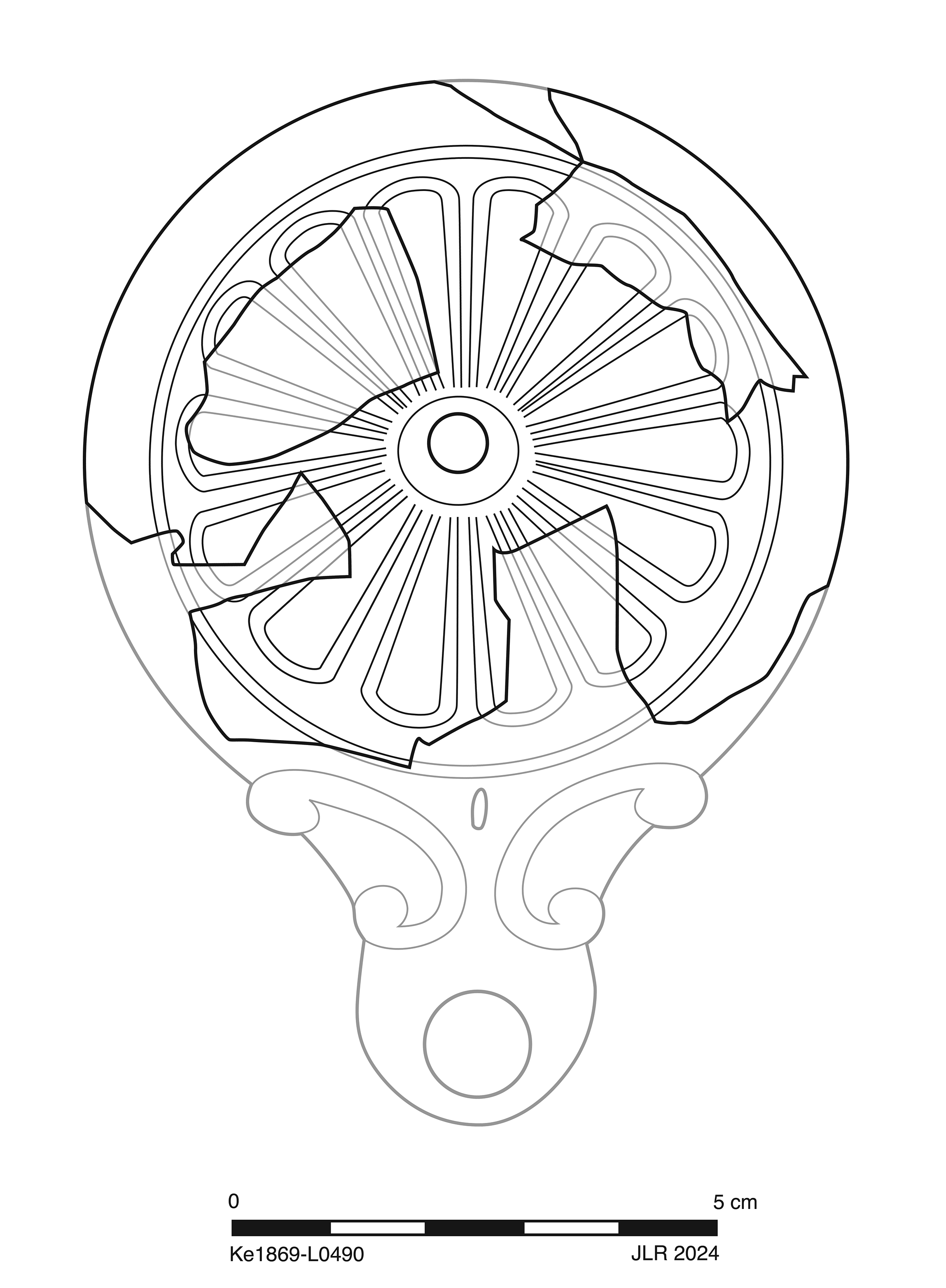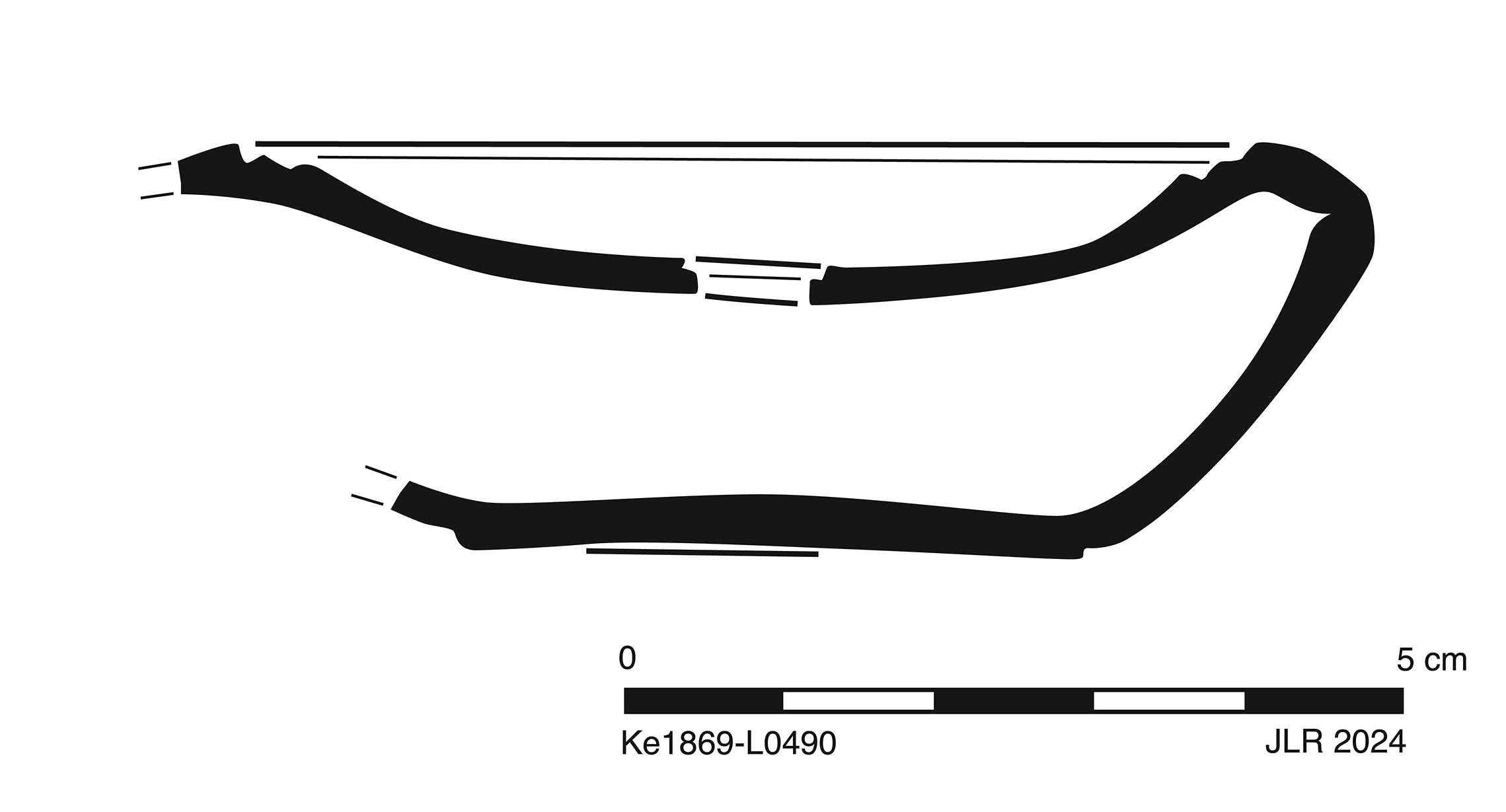- KE 1869 (Early Roman Italian Lamp) [permalink] [next]
- Type
- Inventoried Object
- Logical part of
- Chicago/Indiana/Vanderbilt Excavations Inventoried Objects
- Subject number
- L 490
- Typological identification
- Early-Middle Roman Italian Lamp
- Typological identification comment
- Format: Loeschcke Form IV without handles=Broneer XXIII=Bailey Type B Group iv (Claudian-Trajanic)
- Typological identification comment
- Shoulder: Loeschcke Schulterform VIIb
- Comparanda
- sim. BMLII, pp. 85-86, 177, 178, no. Q 936, pl. 18, fig. 100 (D. M. Bailey; four bilobate petals; dated “Circa AD 40-80“)
- Conservation
- 1960s; mending with shellac, and joins covered with thin strips of plaster.
- Conservation
- 2024 (June 18): mending discus to base using Acryloid B-72 in 40% acetone solution and fiberglass patching (A. Chandri).
- Description
- Circular format. Narrow, rounded shoulder. Circular, slightly concave discus, surrounded by single groove, with sunken central filling hole and shallow relief of rosette with 14 petals. This format typically has a rounded volute nozzle.
- Fabric, firing, surface
- Fabric: buff; smooth break; somewhat soft; slightly coarse, with uncommon to common, small, well sorted, rounded to subrounded, white, black, gray and red, and opaque (quartzitic?) inclusions. Consistently fired. Slip: dark brown to black; thin? semimatte? surface only in faint, small patches. Surface smoothed. Wide indentations and ridges on interior from pressing into mold.
- Preservation description
- Eleven joining sherds preserves ca. 55% of middle to back base and adjacent walls up to edge of shoulder. Extensive, moderate abrasion and frequent pitting; worn breaks; scattered patches of encrustation.
- Published as
- KenchreaiV, p. 23, no. 110 (H. Williams)
- Base Diameter
- 0.0415
- Body diameter
- 0.0832
- Height
- 0.0294
- Weight (kg)
- 0.019
- Material
- Ceramic (Material)
- Drawing
-

- Drawing
-

- Photograph
-

- Photograph
-





